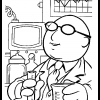Thanks guys! Maybe I should add more info for our product. We are not aiming for sterility. We cook our soups in steam kettle. Our soups are packed in small ready to heat containers plastic containers. We also pack it in bags which are partially vacuum sealed. My employer is a small business and they don't have the kind of money for me to perform detailed heat penetration studies esp. their business was hit hard during Covid like many others but they managed to crawl through it. I was hoping to set up their critical limits based on literature instead of performing a detailed study. I am also leaning towards 100C for 5 min. What are your thoughts?
K
Hi K,
Thks info. Unsure what you mean by "partial" vacuum so I assumed vac pack.
You omitted to mention shelf life and storage conditions (eg frozen/refrigerated). These can be critical.
I assume this is a cook/chill process with refrigerated but not frozen storage (if frozen, the situation may substantially change).
Product type - vegetable soup.
Recommended cooking procedures vary in detail with location, ie Country
I anticipate yr product/cooking times/xD are controlled by Canadian Regulatory requirements.
The general thermal cooking (pasteurization) situation for a variety of Product types is discussed in file ckg 1 below (2017), particularly oriented to EC and USA.
 ckg1 - thermal pasteurization RTE foods and vegetables,2017.pdf 879.46KB
59 downloads
ckg1 - thermal pasteurization RTE foods and vegetables,2017.pdf 879.46KB
59 downloads
For Canada, I noted this (archived material) -
Pre-cooked refrigerated mixed vegetable soups would fall under Category 1, unless the physico-chemical parameters of the products are such that the growth of Listeria monocytogenes will not occur (i.e., pH < 4.4 regardless of aw, aw < 0.92 regardless of pH, combinations of factors pH < 5.0 and aw < 0.94), in which case they would fall under Category 2B. For these products, food processors would need to monitor and maintain records of physico-chemical parameters such as pH and aw, demonstrating that they continue to meet the criteria that justify their classification in this category. If information is insufficient, inadequate or no information exists to demonstrate that there is no potential growth of Listeria monocytogenes throughout the shelf-life, the food will be treated by default as a RTE food in which growth of Listeria monocytogenes can occur i.e., Category 1 RTE food.
https://www.inspecti...65692114?chap=0
I anticipate that the above is for non-vacuum packaged items.
I was not able to find a specific Canadian reference to vacuum packaged soup however this reference implies that for fish haccp control would likely involve C.botulinum in addition to L.monocytogenes.
https://www.inspecti...0/1412623333845
(see section 4.2.1)(the reason for inclusion is that C.botulinum is anaerobic)
The precise Canadian minimum cooking temperatures/times are probably stipulated somewhere in the maze of Canadian documents similar to links above however I was unable to find them.
(Tables for pasteurization of L.monocytogenes and C.botulinum are included in file ckg2 below which, respectively, approx.agree/agree yr data -
 ckg2 - ECFF_Recommendations production chilled food 2006,.pdf 402.36KB
38 downloads
ckg2 - ECFF_Recommendations production chilled food 2006,.pdf 402.36KB
38 downloads
PS - JFI I enclose this analysis of a process analogous to the one you envisage but more oriented to meat products. May be of interest -
 example - cook-chill-vac-pack process.pdf 2.16MB
35 downloads
example - cook-chill-vac-pack process.pdf 2.16MB
35 downloads



















